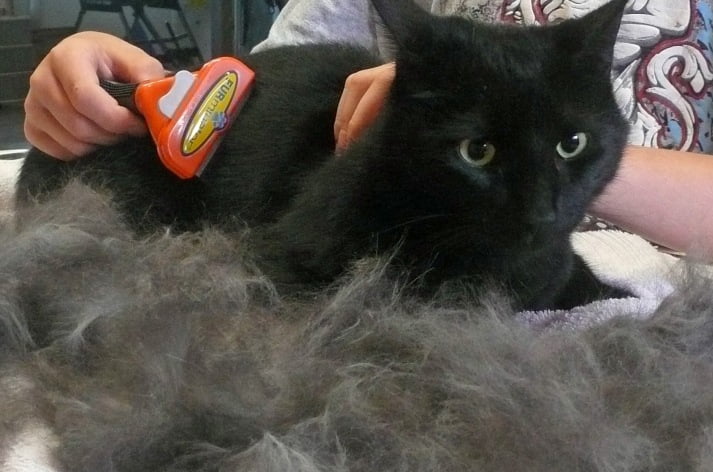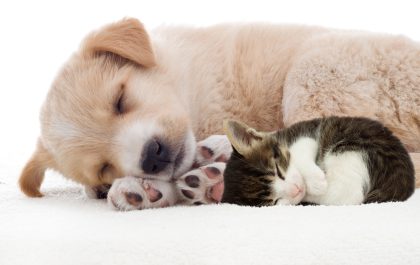Are you looking for tips on how to groom your cat? Many cat owners in Australia are keen to learn more about the best ways to keep their furry friends looking and feeling their best. With the right tools and techniques, you can make sure that your cat is well-groomed and healthy. In this article, we’ll provide you with all the information you need to know about grooming your cat, from the basics of brushing and bathing to more advanced techniques. Read on to discover everything you need to know about grooming your cat.
Brushing and Combing Techniques
Brushing and combing your cat is an important part of grooming and should be done regularly. Not only does it help to keep your cat’s coat looking shiny and healthy, but it also helps to remove any tangles or knots, as well as dirt and debris. Start by brushing your cat gently with a soft brush, working from the head down to the tail. This will help to remove any loose fur and distribute the natural oils throughout the coat. Once you have finished brushing, use a comb to carefully remove any tangles or knots. Be sure to be gentle and take your time, as cats can be sensitive to being groomed.
When you have finished brushing and combing your cat, it is important to check for fleas or other parasites. This can be done by running your hands over your cat’s fur and looking for any small black specks. If you do find any, it is important to treat your cat with a flea treatment as soon as possible. Regular grooming and brushing will help to keep your cat’s coat healthy and free from parasites.
Bathing and Shampooing Tips
Bathing and shampooing your cat is an important part of grooming, and should be done regularly to keep their fur and skin healthy. Here are some tips to help you get the best results when bathing and shampooing your cat.
Firstly, always use a shampoo specifically designed for cats. Human shampoos can be too harsh and drying for cats, so they should be avoided. When you’re ready to bathe your cat, make sure the water is lukewarm and not too hot. Start by wetting their fur, then lather the shampoo into their fur and massage it in. Make sure to avoid their eyes, nose and ears, and rinse the shampoo out thoroughly.
Once your cat is clean, wrap them in a warm towel and pat them dry. It’s important to dry them completely, as leaving any dampness can cause skin irritation. If your cat’s fur is particularly long, you may need to use a hairdryer on a low setting to finish the job. Finally, brush your cat’s fur to remove any tangles, and make sure to brush in the direction of the fur’s natural growth.
Trimming Nails and Cleaning Ears
Trimming your cat’s nails is an important part of their grooming routine. It is important to keep their nails short and well-maintained to avoid any potential damage to furniture or other household items. It is also important to ensure that the nails are not too short, as this can cause discomfort and pain to your cat. To trim your cat’s nails, you will need a pair of nail clippers and a towel. Begin by wrapping the towel around your cat to keep them calm and secure. Then, gently hold one of their paws and trim the nails one by one, taking care not to cut too close to the quick.
Cleaning your cat’s ears is also an important part of their grooming routine. Regular cleaning helps to prevent wax build up and infection, and can help keep your cat’s ears healthy. To clean your cat’s ears, you will need a cotton ball and some ear cleaning solution. Begin by gently wiping the outer ear with the cotton ball, taking care not to push too far into the ear. Then, apply a few drops of the ear cleaning solution into the ear and massage the base of the ear. Finally, wipe away any excess wax with the cotton ball.
Dealing with Shedding and Hairballs
Cats are known for their beautiful coats and, as part of their grooming routine, it is important to be aware of the shedding and hairballs that can occur. Shedding is a natural process that cats go through and is a sign of a healthy coat. It is important to brush your cat regularly to help remove dead hair and to keep the coat in good condition. Additionally, brushing helps to reduce the amount of hair that ends up in the cat’s stomach, which can lead to the formation of hairballs.
Hairballs can be a common problem for cats, and can be uncomfortable and even dangerous if not addressed. It is important to monitor your cat’s grooming habits and to look out for signs of hairballs. If you notice your cat coughing up hairballs, there are a few steps you can take to help reduce the occurrence of hairballs. Firstly, make sure you are brushing your cat regularly, and you can also look into specialised hairball control diets which can help to reduce the amount of hair your cat swallows. Additionally, you can give your cat specialised hairball control treats which can help to keep their coats healthy and reduce the occurrence of hairballs.
Choosing the Right Grooming Tools
Grooming your cat is an important part of keeping them healthy and happy. It is important to choose the right grooming tools to ensure that the process is as stress-free as possible for both you and your cat.
When selecting grooming tools for your cat, it is important to take their size and coat type into consideration. For short-haired cats, a brush with soft bristles is ideal for removing dirt and loose fur. For cats with longer coats, a metal comb is recommended to help remove tangles and debris. If your cat has sensitive skin, consider using a rubber brush or grooming glove to prevent irritation. Additionally, a flea comb should be used to check for fleas and other parasites.
It is also important to consider the type of clipper or trimmer you will use for your cat’s nails and fur. Clippers should be sharp and designed for use on cats. If your cat has long fur, you may want to invest in a cordless trimmer to make the process easier. Finally, make sure to have a pair of scissors on hand for trimming around your cat’s eyes, ears and face.
Preventing and Treating Fleas and Ticks
Preventing fleas and ticks is an important part of grooming your cat. Fleas and ticks can cause a number of health issues for your cat, and can even be passed on to humans. To prevent fleas and ticks, it is important to keep your cat’s fur clean and groomed regularly. Regularly combing through your cat’s fur with a flea comb can help to remove any fleas or ticks that may be present. Keeping your cat’s environment clean and free of debris, such as leaves or grass, can also help to prevent fleas and ticks.
When it comes to treating fleas and ticks, there are a number of different products available. These products typically contain insecticides that can be applied directly to your cat’s fur. It is important to read the instructions carefully before applying any product, as some may be toxic to cats. Additionally, your vet may be able to recommend a product that is safe and effective. Additionally, you can use natural remedies, such as essential oils, to help reduce the number of fleas and ticks on your cat.
Maintaining a Healthy Coat and Skin
Maintaining a healthy coat and skin for your cat is an important part of keeping them healthy and happy. Regular grooming of your cat’s coat and skin will help to keep them clean, comfortable and looking their best.
Start by brushing your cat’s coat regularly to remove dirt, debris and loose hairs. This will help to reduce the amount of mats and tangles, and will also help to stimulate the natural oils in your cat’s skin which will keep their coat looking glossy and healthy. It is also a good idea to check your cat’s skin for any lumps, bumps or parasites, and to keep an eye out for any changes in their coat or skin. If you notice any changes, it is important to take your cat to the vet for a check up. Regular bathing is also important for cats, as this will help to keep them clean and free from any skin irritations. It is important to use a shampoo specifically for cats, as other shampoos can be too harsh for their delicate skin.
Professional Grooming Services and DIY Options
Professional Grooming Services
Professional grooming services are a great way to keep your cat looking and feeling their best. From brushing to bathing, a professional groomer can provide a comprehensive service that will leave your cat feeling pampered and looking their best. Professional groomers are trained to use the best techniques and tools to groom your cat, and can provide advice on the best products to use for your cat’s specific needs. Professional grooming services can also help to identify any health issues that may be affecting your cat, and can provide advice on how to best care for them.
DIY Options
For those looking to save money, there are also DIY options for grooming your cat. With the right tools and techniques, you can learn how to groom your cat at home. Brushing your cat regularly is a great way to keep their fur free of tangles and mats, and to keep their skin healthy. You can also give your cat a bath, using a specially formulated shampoo for cats, and a conditioner to keep their fur soft and shiny. With the right tools and knowledge, you can learn how to groom your cat like a pro and keep them looking and feeling their best.
Final Thoughts
Grooming your cat is an important part of their overall health and wellbeing. With the right tools and techniques, you can make sure that your cat is well-groomed and healthy. From brushing and combing to bathing and shampooing, there are many steps you can take to ensure that your cat’s coat and skin remain healthy and free from parasites. Additionally, it is important to trim your cat’s nails and clean their ears regularly, as well as deal with any shedding or hairballs. Finally, make sure to use the right grooming tools for your cat’s coat type, and consider professional grooming services if necessary. With these tips in mind, you can ensure that your cat is looking and feeling their best.
Grooming your Cat FAQs
Start by introducing your cat to the grooming tools and giving them treats as positive reinforcement. Gradually increase the length of each grooming session.
Use a cat-friendly shampoo and a non-slip mat in the tub. Speak to your cat in a soothing voice and give them treats to help keep them calm.
You should trim your cat’s nails every 2-3 weeks to prevent them from getting too long and causing discomfort.
Brush your cat in the direction of their fur, starting from the head and working your way down to the tail.
It depends on your cat’s individual needs. Some cats may need to be bathed occasionally, while others may not need a bath at all.
Consult your veterinarian for advice on how to treat your cat’s specific skin problems or allergies.
Use a dematting tool or a pair of scissors to carefully cut out the mats. Be gentle and avoid pulling on the fur.





